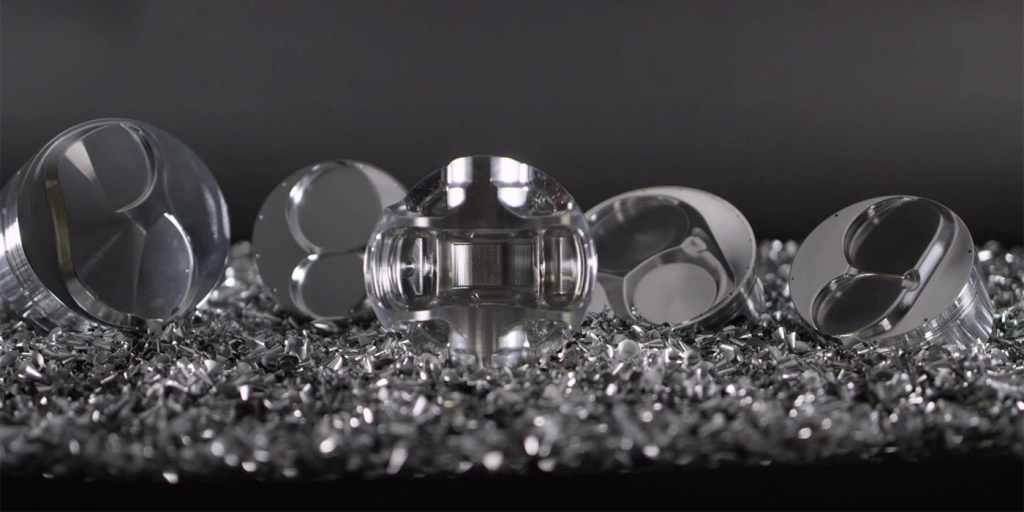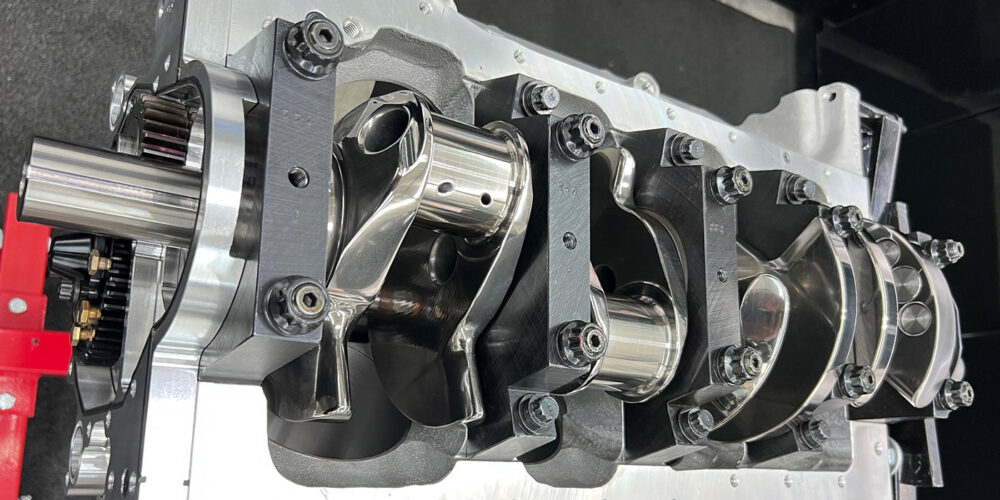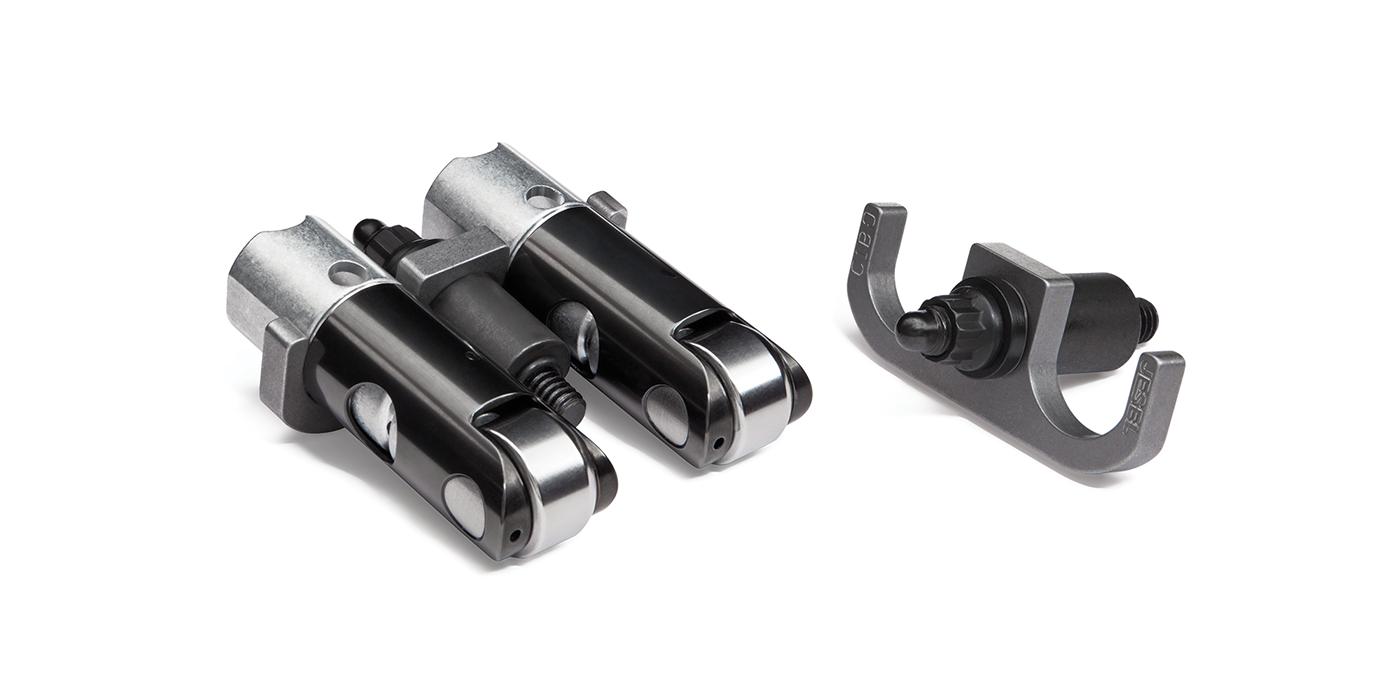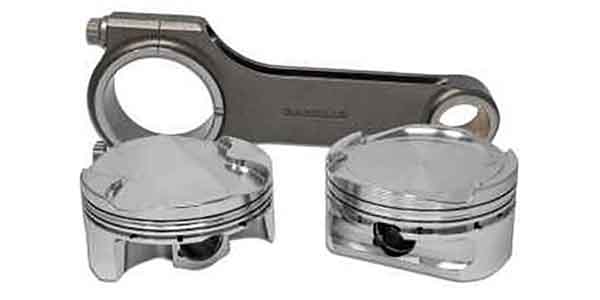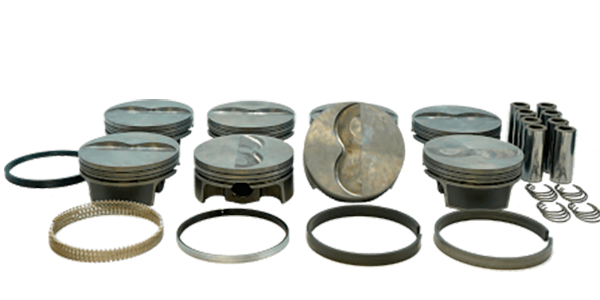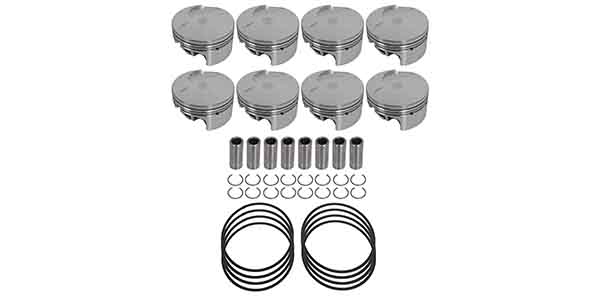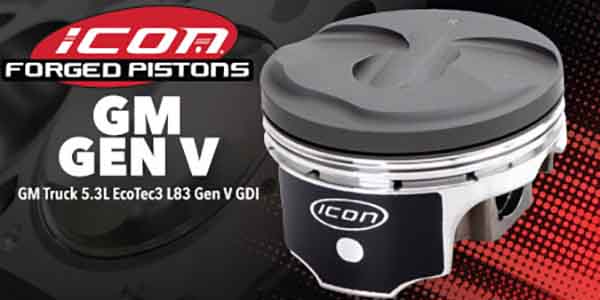Coming off of late-2019 tradeshows such as SEMA and AAPEX in Las Vegas and PRI in Indianapolis, engine builders, racers and enthusiasts alike are eager to learn what’s trending and new with piston technology as we enter 2020 and this year’s race season.
What piston manufacturers know all too well is what most of us know to be true – people want to make more horsepower and upgrade their engines! That fact hasn’t changed. However, these days, everybody’s got four-digit power levels in mind, and better pistons are one of the key components in being able to achieve those numbers.
Most piston manufacturers admitted that 2020 won’t showcase any leaps and bounds in innovation, but the focus on performance, quality and better materials are still top of mind for a wide array of engine platforms and applications. Whether it’s thinner ring packages, higher quality, fine-tuned piston and rod combinations, lighter weight and reduced friction, coatings, or crown shapes, here’s what’s going on with pistons this year.
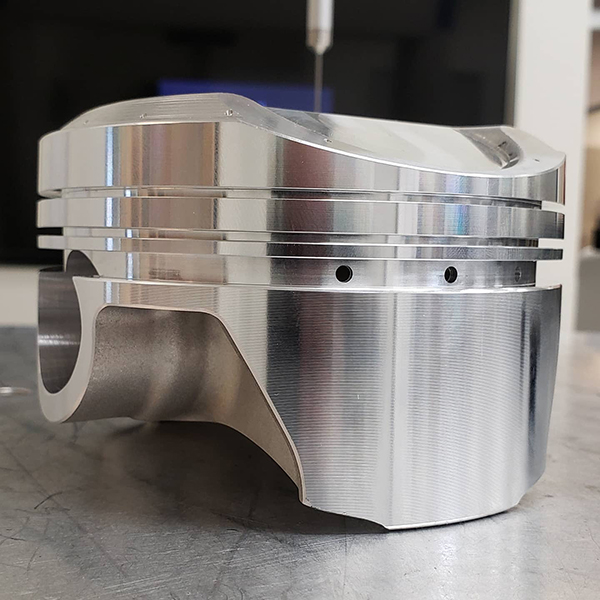
What’s Trending/New
As seen in the pages of Engine Builder in the January issue, the LS family of engines remains a mainstay for piston manufacturers as well. More and more options are entering the aftermarket and more options are being added to shelf stocks versus custom.
“We’ve made additions to our LS platform in the LS 5.3L in both the flat top and the dome,” says Joe Maylish of Mahle Motorsport. “That’s still a tremendously hot market with everything that involves LS. The LT 5.3L direct injected drop-in was an offering as well. We also offered a drop in for the Ford 5.2L and for the new Toyota Supra and BMW B58 motor.
“Specifically, with the LS platform in the last year, we introduced what we call an LSX combo, which is a piston we designed in flat top, dish and dome, and it fits multiple heads for the LS platform – LS1, LS2, LS3, LS6, LS7, L92. That’s something we’re starting to see a pickup on where guys can take this piston, use it for different heads and it’ll work for all of them.”
Mahle’s more popular pistons for the LS engine family are for the L92 and LS3. Similarly, the folks at Race Winning Brands (JE, Wiseco and Diamond) have also seen the LS piston lines remain popular and have also placed a bigger focus on direct injection piston lines.
“The latest trends we have been seeing is development in the direct injection engines,” says Nickolaus DiBlasi, director of product management for Race Winning Brands. “Better tuning and capabilities have enabled more efficient extraction of power from these engines. It is not uncommon to see turbocharged engines with a static compression ratio of 10.5-12.5:1. The design of the crown is critical to maximizing combustion in these engines as well.”
On the consumer side, off-the-shelf pistons continue to be a big deal, but a newer trend has been an increase in those off-the-shelf products carrying features more commonly found in custom pistons.
“Gas ports that were once only found on racing engines are migrating towards street use,” DiBlasi says. “We see many other features following suit.”
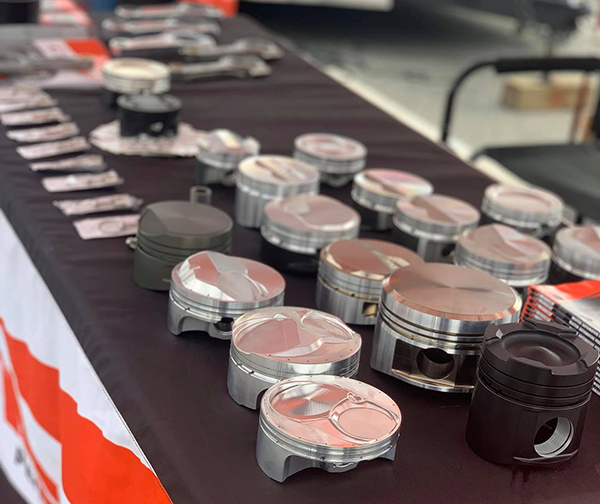
In an effort to attract those customers, JE Pistons has expanded its SRP Professional line in 2618. Additionally, its Ultra Series piston line, which features a new approach to the forging process and high-end features commonly found on custom pistons, is also being promoted heavily as an off-the-shelf option.
According to Maylish, Mahle Motorsport introduced about 13 new products this past year – several small block Chevy domed pistons in a 4032 alloy, which were added to the company’s shelf stock, a small block Ford domed piston in a 2618 alloy, and additional pistons to their BMW PowerPak piston line.
“We were getting lots of calls and customers asking for these pistons, so we saw that as an opportunity in the market and decided instead of trying to make something that would be custom for the customer, let’s make these shelf stock because we’re getting so many calls on it,” Maylish says. “When it comes to innovation and new design, often times it’s what the customer is demanding and what they want.”
Taking a look at what CP-Carrillo is up to, the piston manufacturer says its working on continuous stabilization of the part, product and process improvement, streamlining manufacturing, speeding up repeat orders, and improved repeatability.
Speaking of product improvement and repeatability, piston material has a lot to do with it, and both 4032 and 2618 alloys remain the mainstay materials, but that’s not to say there isn’t innovation occurring on the material front.
Alloys
The majority of pistons utilize either 2618 or 4032 alloys, which are great universal materials, however, piston manufacturers will tell you there is tons of room for improvement with new alloys and manufacturing techniques.
“We have been investing a lot of time into the material science and manufacturing process of our aluminum and conversion into forgings,” DiBlasi says. “We are testing new materials constantly and new ways to forge and machine pistons as well. Not only innovating but looking for disruptive technologies.”
In that regard, Race Winning Brands’ piston companies often get custom alloy mixes, which were developed for other industries, and they put them through the paces for engine applications.
“We often test and purchase new alloys that aren’t being used in the automotive industry,” DiBlasi says. “We have five different alloys on hand. Some are in development. Some are a specific government alloy that they created for aerospace. Some are just something we came up with and we wanted to see how it worked out.”
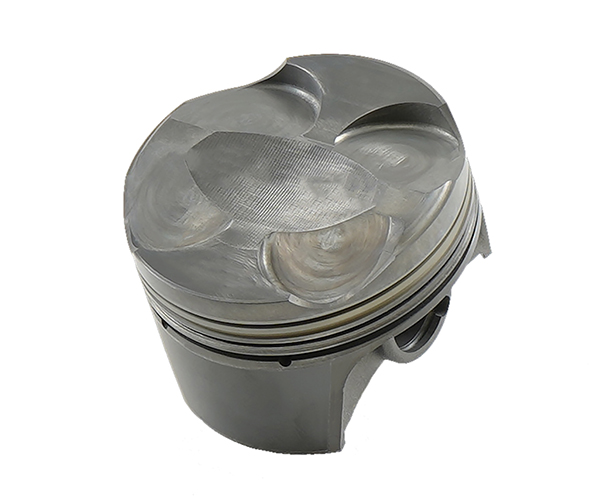
The main thing challenging most piston companies is finding that perfect alloy combination. The majority of material used in the aftermarket for high horsepower engines is 2618. The 2618 alloy has low silicon content and a lot of thermal expansion between its cold point and its warm point – it changes dimensionally a lot.
On the other hand, the 4032 alloy has a lot of silicon content in it, which makes it very stable. In fact, it’s so stable, it doesn’t grow. It’s pretty brittle as a byproduct and is best suited for lower horsepower applications.
“People who have these engines automatically want to start upgrading them,” Maylish says. “A lot of times we’re still trying to educate the customer on that 4032 versus 2618 alloy. The 4032 alloy could be in anything from a race car on a short track to somebody who has a hot rod under 750 horsepower. When you get higher than 750-800 horsepower, you’re going to have power adders and its primarily race-only applications. That’s where people are going to use that 2618 alloy.
“We run into that question all the time with customers who call up and say they really want the 2618 alloy. When we ask them what they are trying to do, they say they’re building a hot rod to use on the weekend. We have to talk them down to the 4032 alloy because they don’t need a high horsepower alloy. Between our social media and YouTube, we’re doing education videos on that to educate the customer. It’s not so much the engine builder. The engine builder knows. It’s the customer who’s looking at different things they can buy and searching around the internet. The engine builder knows the differences in their alloys and what they want to do specifically with a build.”
What the professional engine builder may be interested in is what the folks at JE Pistons are working on. They’re looking for the holy grail of alloys and ways to create better strength within the specific alloys.
“There’s this long quest to find a material that’s the best of both worlds,” DiBlasi says. “That’s what we’re after. We want the robustness of a 2618 or stronger, but we want it to virtually not move. We want it to be like steel where no matter whether it’s cold or hot, that amount of growth is so small you can run it very tight. When you can run a piston very tight to the bore size – at all operating temperatures – you get a lot of ring seal and piston stability. You can keep all the power inside where it needs to be and transfer that.”
The quest for better pistons is not a new one. Everyone is trying to maximize horsepower with a piston that’s extremely strong, doesn’t shatter and doesn’t grow. The effort has resulted in pistons made of metal matrix, ceramic and various alloys, but the search for a true solution continues.
“If you were to make the best of both [2618 and 4032], it would definitely be a high-performance application,” DiBlasi says. “If you look at 4032, it has a certain amount of heat it’s going to handle before it’s done. You have to get past that point to need something else. But if you look at the market trends, engines are making way more power than they did 20 years ago. Tuning is more efficient, fuel is more efficient and every part of the engine is being demanded on far more than it was. Now we’re pushing the limits of these engines.
“We’re on the quest for getting that exotic material for the masses. You can find materials that will be close to this, however, it’s five times the cost per pound of metal. It’s very expensive to do and hard to machine.”
To compensate for the difficulty in finding that perfect material, piston manufacturers have taken what they’ve learned from racing and from the OEMs and combined it.
“We’re really at a point where we’re looking at design and how to incorporate it to maximize that piston’s benefit,” Maylish says. “That’s what we were able to do with the LSX combo piston being able to fit multiple different heads.”
In addition, manufacturers like Mahle have continued to employ piston coatings and other features to help pistons perform better. JE has even started manipulating the grain structure of the piston for added strength and benefits.
“We have explored and we’re already undergoing a different machining and forging process, which basically fixtures and changes the dynamic of the grain structure of the forging,” DiBlasi says. “Typically, when you take a piece of aluminum or steel, you have a form, you punch it into a shape and it basically aligns all the grains in the shape of your end product, but it doesn’t align all of them. With current forging technology, there’s about 20% left where you can really try to strategically align that grain flow structure so you can get the most out of the same existing design architecture.”
That’s what JE has done with its Ultra Series pistons using its proprietary Aligned Grain Flow technology. By forging the piston in a proprietary new way, JE is able to direct grain flow around critical parts of the piston such as the pin bosses, skirt and crown. Longer, thinner grains that are compressed more tightly together, create additional grain boundaries in the most critical areas.
“Typically, there’s about a 20% gain in grain flow structure, which in some cases equates to strength. You can either have a stronger part at the same shape and weight or you can shave off some thickness and have as strong a part, but much lighter. That’s been pretty big for us right now.”
Crown Shape
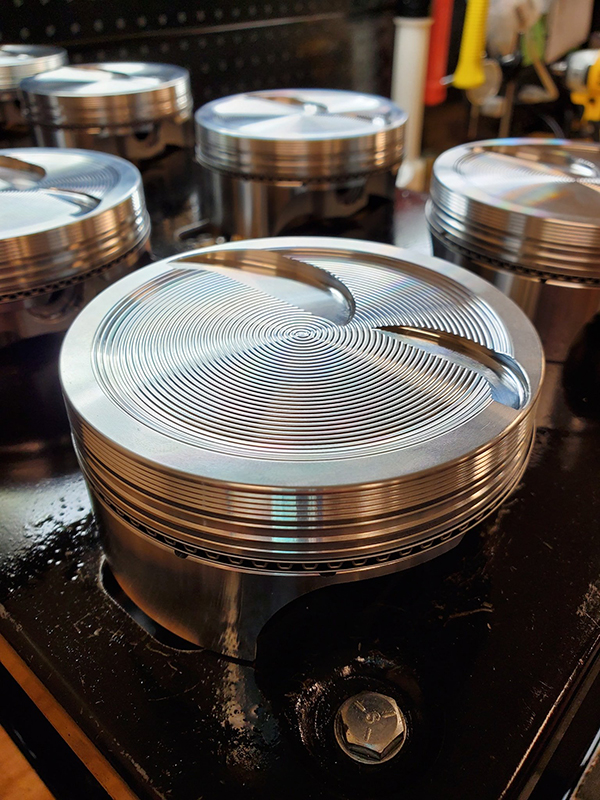
While we’re on the topic of strategically changing a piston’s grain flow, the shape of the piston crown is also a useful way to increase performance. A piston’s crown shape is constantly being developed and innovated to maximize efficiency. For instance, OEMs change crown shapes often in direct injection engines.
“Crown shapes are a lot more common now,” DiBlasi says. “With so many engines being direct injection, the injection angle of the nozzle, how much pressure it is, where it ends up, how much residual passes the shape of the crown, is highly important to combustion. It’s really important to know exactly where that angle is, what it was intended to do and what happens if you don’t capture the fuel and the air in the spot it’s supposed to be.”
Piston manufacturers spend a lot of time mimicking the exact angle to capture fuel where it needs to go. It’s very easy to identify engines and pistons that don’t do this correctly because you have almost immediate failure.
“When fuel gets past the crown shape on the top of the piston and it’s not captive, fuel gets on the cylinder wall and basically washes all the oil right off the cylinder wall,” he says. “That causes the piston to heat up and quickly get destroyed.”
DiBlasi added that he used to see this outcome a decade ago with direct injection sport compact engines because the piston crowns weren’t holding the fuel in the right spot.
“Every engine is so different – you have to develop the crown shape per specific head application,” he says. “It’s really just paying attention to the details and making sure you design it optimally for that application. And there’s a lot more to it besides just copying the OEM shape, because a lot of times the OEM shape, while designed to capture fuel, it’s also manufactured as fast and as cheap as possible. There’s a lot of times where you need to maximize or change what the OEM did because you want to get more out of it. There’s a lot of room for improvement. You can optimize a crown shape and extract a lot more power without doing anything else. It’s a very inexpensive upgrade.”
Popular engines/markets
While improving the piston has always been the number one goal of piston manufacturers, followed closely behind is making sure pistons are available for the masses and for the right applications.
According to Mahle Motorsport, they’ve been seeing a lot of activity in their shelf stock pistons and drop in pistons for Ford, Subaru, LS, Chevy and diesel applications. For JE, the LS and LT engines have been popular ones.
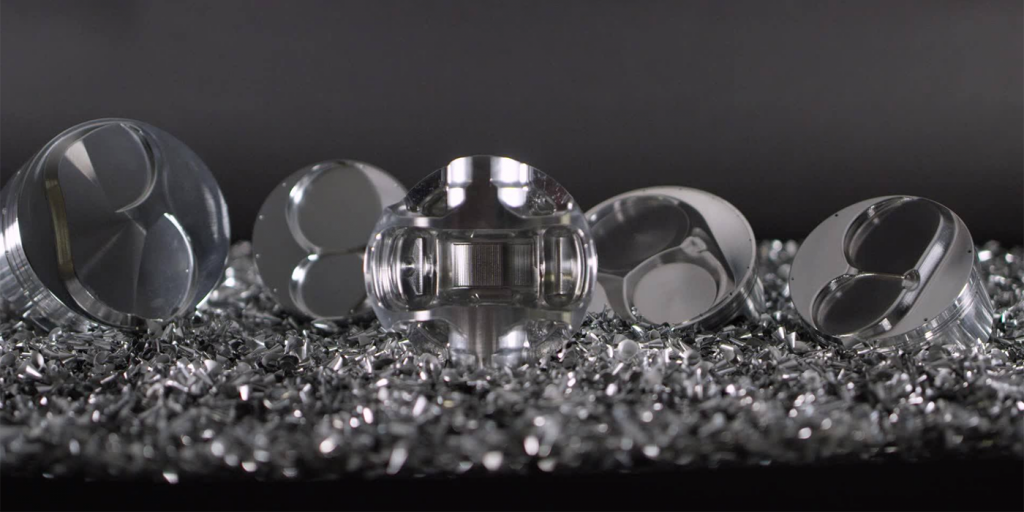
“LS engines, just like everybody else, is one of our largest growth areas,” DiBlasi says. “We see a huge growth in sport compact, small displacement engines. There’s a lot more GM LTs coming through. I’ve seen a lot more Coyote and modern Modulars emerge. Those are the big movers.”
CP has also seen growth in the LS and LT market and has also been promoting Pro Mod and other drag race applications. No matter what areas piston manufacturers are targeting, the one group they always want to keep happy are the engine builders themselves.
“Our strength in our business is with the engine builder,” Maylish says. “Ultimately, the engine builder wants something that’s going to be reliable, that they’re going to be able to depend on and not have to worry about coming back through the door with any issues.”
That’s exactly what piston manufacturers are aiming to do in 2020 and beyond. EB

